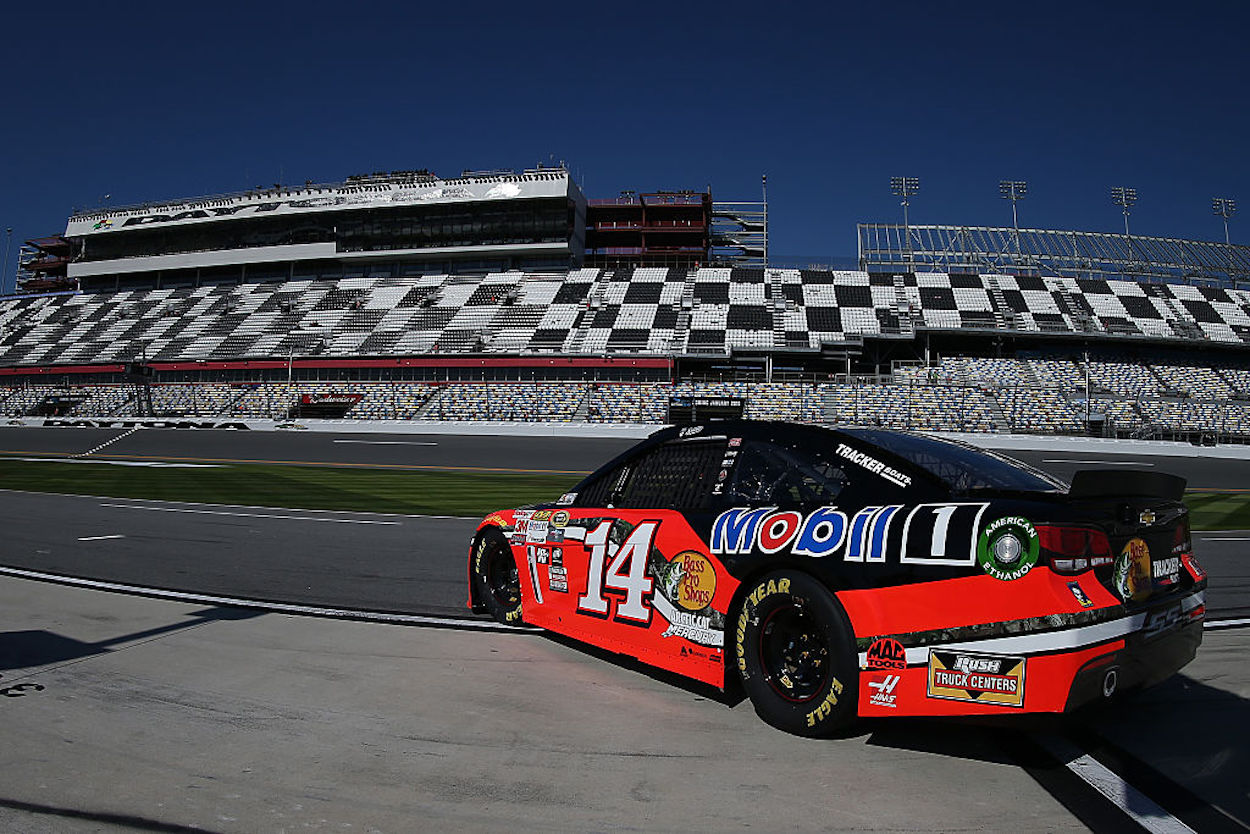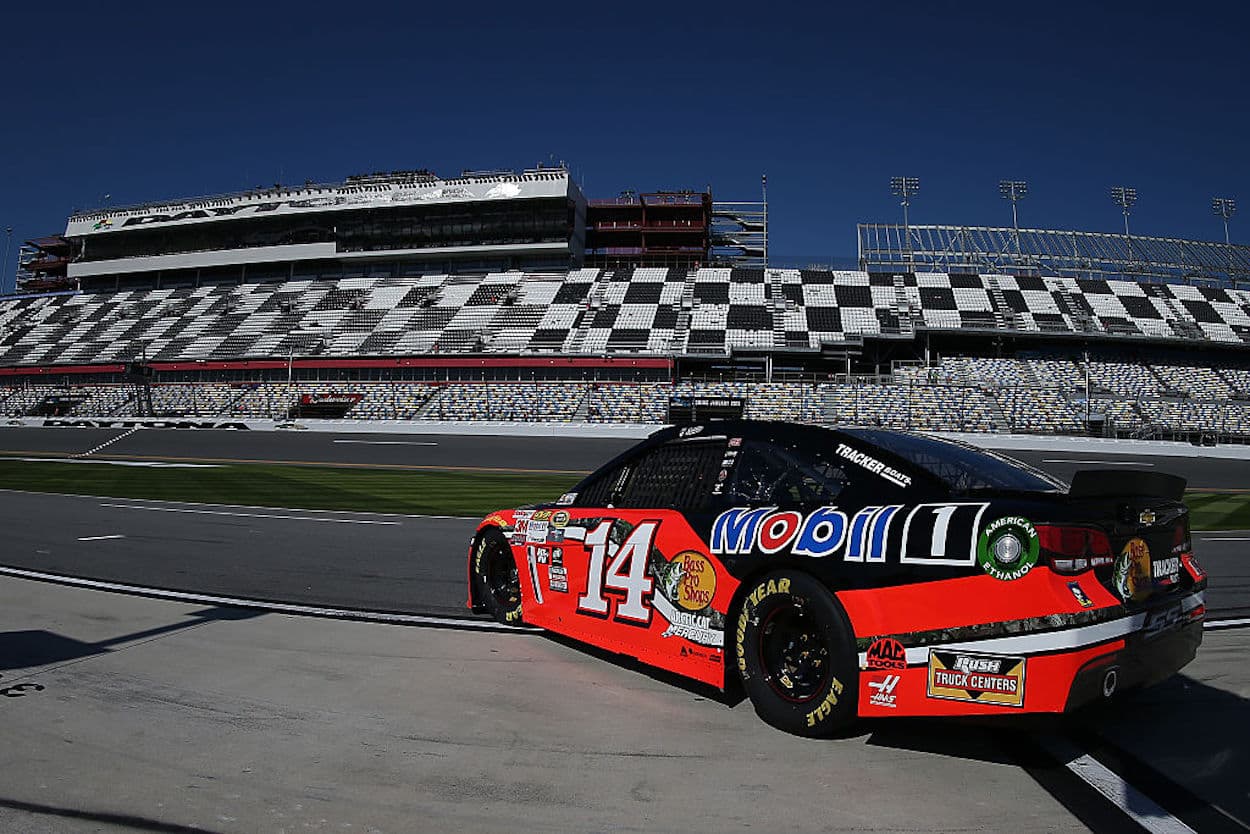NASCAR
5 Little-Known (and Somewhat Mind-Blowing) Facts About the Daytona 500

Think you know everything there is to know about the Daytona 500?
Well, maybe you do, but it’s highly, highly unlikely — even if you’ve been a NASCAR fan all of your life.
With the 64th running of the Daytona 500 on the horizon, buckle up your seatbelt and prepare to have your mind blown by one or more of the following five little-known facts about The Great American Race.
1. A shocking number of NASCAR’s top current-day drivers and all-time greats have never won the Daytona 500

Pop quiz: What year did Tony Stewart win the Daytona 500? How about Rusty Wallace? Mark Martin? Terry Labonte? Alan Kulwicki? Bobby Labonte?
Or how about some modern-day drivers like Chase Elliott, Kyle Larson, Brad Keselowski, Kyle Busch, and Martin Truex Jr.?
OK, sorry. It was a trick question. You’d probably already figured that out, though. None of these current or future NASCAR Hall of Famers have ever prevailed in NASCAR’s biggest race. While that may come as a shocker to many fans, especially those who are newer to the sport, it’s not shocking at all when you think about just how difficult the 500 is to win.
If there’s one race on the Cup Series schedule where almost everybody brings their “A” game, it’s the Daytona 500. To win it, however, a driver and team must not only bring their “A” game — they almost certainly need at least a little luck on their side.
2. Only four drivers have won back-to-back Daytona 500s in the race’s 64-year history
Yes, you read that correctly. The only thing harder than winning the Daytona 500 is winning it in consecutive years — which has only happened four times in nearly six-and-a-half decades of Daytona 500 history.
So who makes up the elusive quartet of drivers who’ve pulled off the extremely rare repeat in The Great American Race? That would be Richard Petty (1973-1974), Cale Yarborough (1983-1984), Sterling Marlin (1994-1995), and Denny Hamlin (2019 and 2020).
It seems worth noting here that of the four drivers who’ve captured the Daytona in successive years, only Petty and Yarborough are former Cup Series champions.
3. The Daytona 500 hasn’t always been the first race of the Cup Series season
Unfathomable as it may seem in 2023, a time actually existed when the Daytona 500 wasn’t the kickoff race of the NASCAR Cup Series season.
In fact, it wasn’t until 1982 — 24 years after Daytona International Speedway joined the Cup Series tour in 1959 — that the fabled 2.5-mile track built by NASCAR founder William H.G. “Bill France” became host to the annual season opener.
Before the Daytona 500 slid into its current slot, where it’ll likely forever remain, the first race on the Cup calendar rotated from track to track. The last venue to host the season opener before Daytona moved into this role was Riverside International Raceway, a 2.62-mile California road course where the Cup Series began its season from 1970-1981.
4. The winner of the first Daytona 500 wasn’t officially declared until three days after the race ended
Back before the days of electronic timing and scoring, it wasn’t always so easy for NASCAR to determine the winner of a race where two or more drivers took the checkered flag in a photo finish.
So it was at the inaugural Daytona 500, held in 1959, that NASCAR legend Lee Petty won by a mere two feet over Johnny Beauchamp. Initially unsure of who had crossed the finish line first, NASCAR took three days to review photos and film of the finishing order before ultimately declaring that Petty — the father of future seven-time Cup Series champion Richard Petty — was the winner in his 1959 Oldsmobile.
This was after NASCAR had initially declared Beauchamp the unofficial race winner in the moments after the race ended — and even sent Beauchamp to Victory Lane, prompting Petty and his team to protest the outcome.
Pretty wild, isn’t it?
5. The first 53 Daytona 500s started on time and finished the same day
Given how zany the weather tends to be in Central Florida, even during the winter months, it’s hard to believe that Mother Nature never forced NASCAR to postpone the start of the Daytona 500 in the first 53 installments of The Great American Race (although rain did cause the event to be shortened on four previous occasions).
It wasn’t until 2012 that rain, at long last, left NASCAR no choice but to not only push back the green flag back but also reschedule its most important race for a whole day later than originally planned.
Eight years later, in 2020, the race started on time but finished on Monday due to persistent showers that made NASCAR suspend the race on lap 20 and try again the following evening.











